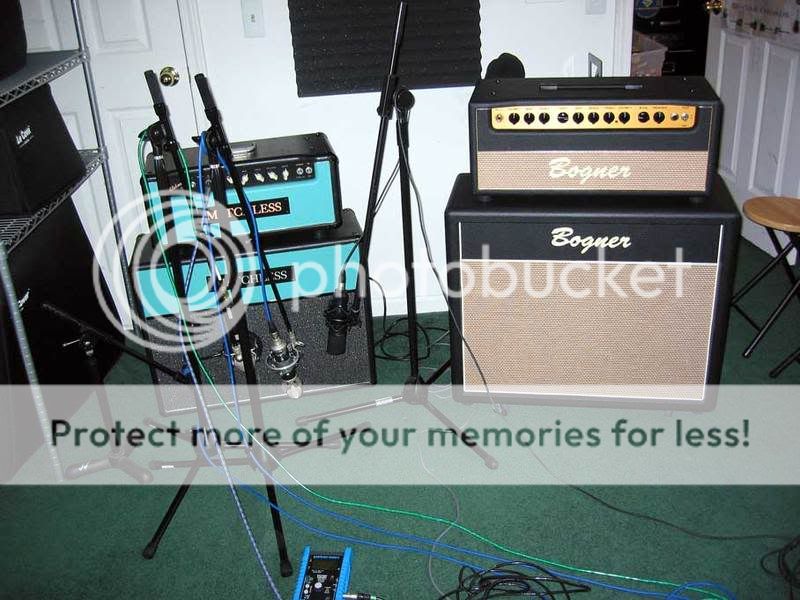I'm on the opposite road: moving away from mixing mics. ..... This keeps me closer to reality too: I'd never mic a real cabinet live with 4 mics......
No offense taken. It's funny though that in reality I started using multiple mics when micing up my scumbacks, because I couldn't get a real good sound with just one mic. Now I get the best traits from these mics.
Here's what I did. I took a speaker I really know well in real life and have used a lot in the Axe-Fx (the G12H30) and went through all the mics in the big box. I filled 8 user slots up with the most common positions of one mic and cycled through them on my two most used patches. Here are my observations.
The SM7 has the same cutting power as the SM57 but without the harsh high end. It's also quite flat and a real meat & potatoes mic. It's a dynamic mic and works good from 0" without too much proximity effect. Dynamic mics need to be closer to really get them working, at least according to my experience. As a general rule of thumb, get the dynamic mics up to the grill (0 inches in RedWirez land) and condenser mics, especially the large diaphragm ones, need a bit of distance or they'll get too boomy.
The RE20 is also honest and to my ears the most flat, yet more detailed than the SM7. Most transparent. I noticed that there are no proximity issues, in any of the 8 syx files I tried of this mic , and this gives me a condenser-like sound up close to the grill, even though it's a dynamic mic. So cap edge 0"
The U67 has nice tube warmth and detail and richness. Really adds something to the sound. However, that mic alone lacks cutting power and adds the risk of muddying up the mix. That's where you need the two dynamic mics. Also, the U67 has some real proximity issues, so needs to be at least 3 inches off the grill. Again, cap edge gives best compromise between detail (high-end) and low-end/body.
The R121 is my favorite mic of the bunch. Incredibly rich and detailed. Adds some magic. Needs to be on the cap instead of the cap edge or it gets too muddy. Because of proximity effect it needs to be at least 1" off the grill, but 2" sounds great as well. Just use the distance between 1 and 3 inches to get low end to taste. At greater distances you lose some of that magic detail though. Again, just like the U67, it needs a dash of RE20 and SM7 for some honest transparency and detail or the mix gets too thick and slightly muddy.
Also, the mix of the recipe above gives you dynamic mics, tube mics, condenser mics and a ribbon mic. These are the reasons I needed the mix of four, because they really need each other and each has a quality that the other ones don't have. Although I only realized this after the fact, now you have a 50/50 mix of dynamic and non-dynamic (condenser/tube/ribbon) mics.
The following mics I also liked but didn't add anything to the four I had already selected:
C414, nice detail and fatness. Needed to be on the cap edge and 3" off the grill because of proximity effect. Liked the U67 better.
U47, slight harshness, but nice condenser mic. Cap Edge 1 inch
SM57, the most common guitar mic ever. Great cutting power but harsh high end and upper mids. Needs to be off-axis because of it. So, 0 inches at the cap edge off axis it is.
On the G12M25, I also really liked the Neumann M8 on Blue Bottle. Cap Edge 1"


